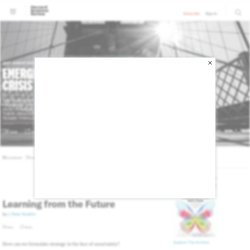

AmCham Futur du Travail vFR Web. How to Support Employees’ Learning Goals While Getting Day-to-Day Stuff Done. Executive Summary Managers are under tremendous pressure to generate results.

You have annual quotas, quarterly goals, and increasing competition. Who has time to let employees go learn skills that may not be relevant for years, or may not serve your unit at all? It’s a tough balancing act, but the ROI for enabling this development is enormous. Start by getting top-level guidance and metrics. Many of the most successful people had to fight tooth and nail for opportunities to learn new skills and advance up the corporate ladder. But this is only half the story. I hear these challenges all the time as I work with managers at all levels, particularly in large corporations. Get top-level guidance and metrics. Ask the bosses to tell you: How much time do they expect employees to spend learning during work hours?
There will always be some tension. Nearly every manager who has reported to me has questioned the wisdom of spending time building talent when there are immediate business goals. Hbr. « La vraie question que pose le télétravail, c’est celle de l’utilité du travail » Tribune.

La rentrée s’annonce comme une « télé-rentrée ». Le télétravail imposé brutalement par le confinement s’installe comme un mouvement de fond dans les entreprises. Avec trois bonnes raisons : lutter contre une reprise de la pandémie, répondre à l’attente de nombreux travailleurs, et gagner en efficacité. Si les deux premiers mobiles sont facilement audibles, le troisième est la zone de tous les dangers. Car derrière la recherche d’efficacité, se profile la question de l’utilité, utilité des heures travaillées, utilité de certaines fonctions, utilité de certaines tâches. C’est la question que j’ai entendue au cours d’une réunion (distancielle) avec des chargés de communication en ressources humaines : « Mais si tout cela c’était du vent ? Quelles sont les compétences numériques de demain.
Présentation des compétences numériques en devenir avec le cadre de référence du Ministère de l'éducation et de l'enseignement supérieur du Québec Comment cerner, comprendre et faire siennes les compétences numériques pour aujourd'hui et pour l'avenir ?

Dans toute stratégie et plan d'action de transformation numérique, l'accompagnement humain est primordial et la formation est essentielle. S'interroger sur les compétences digitales, c'est les prendre en compte dans son projet de transition numérique. En avril 2019, le Gouvernement du Québec a publié et mis en ligne Le cadre de référence de la compétence numérique (34 pages, en PDF), un dossier stimulant pour les enseignants, formateurs, entreprises et apprenants. Twitter. Emerging from the Crisis. Executive Summary One night some time ago I was in a movie theater in Los Angeles when an earthquake struck.

It was a rather long one, with several aftershocks. I remember distinctly that people in the theater seemed to fall naturally into one of three groups: Some panicked and moved chaotically, unsure what to do or where to go. Some remained calm and moved to the emergency exits, just as the preshow announcement had suggested they should.
And some hardly moved at all. I’ve been thinking about that night since the start of the coronavirus pandemic. As companies navigate a slow return to ordinary life and work routines, they must understand and acknowledge that employees will need varying kinds of support. Putting that name—grief—on it has proved to be a powerful way to help anxious colleagues make progress toward normalcy. Grief is well understood, so we know of ways to deal with it. Be aware of three groups: the worried well, the affected, and the bereaved. Building Work-Life Boundaries in the WFH Era. Nancy P.

Rothbard July 15, 2020 Photography by Mariyan Atanasov Remote work used to be an option for those employees who could convince their manager that it was a good idea. All that changed with the arrival of Covid-19. For many, the transition to remote work has been remarkably smooth, aided by technologies such as fast internet, smartphones, and video- and audio-based conferencing. Much of my research over the past 20 years looks at how we form and manage boundaries between different parts of our lives. Integrators and Segmentors in the Office Back when you worked at an office, maybe your family dropped by to visit you or you regularly took work home. Generally speaking, there are two key dimensions that integrators and segmentors have to navigate: time and space. Time. In contrast, segmentors strive to focus on work during work hours and on family during family time.
Space. Future of Work.